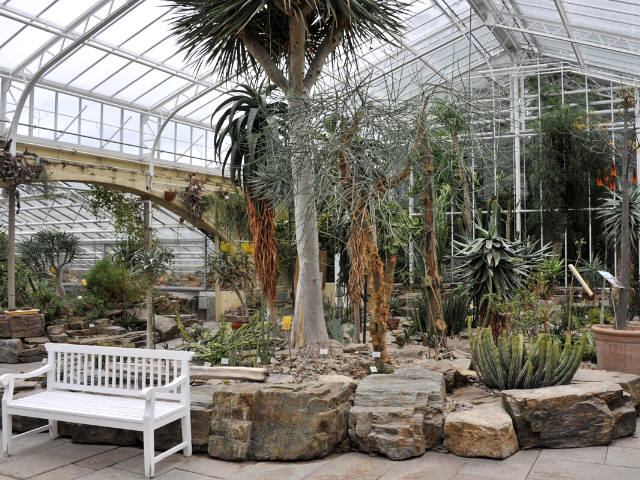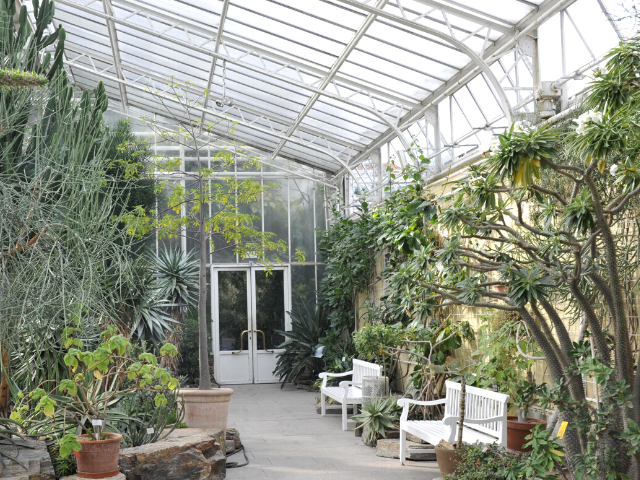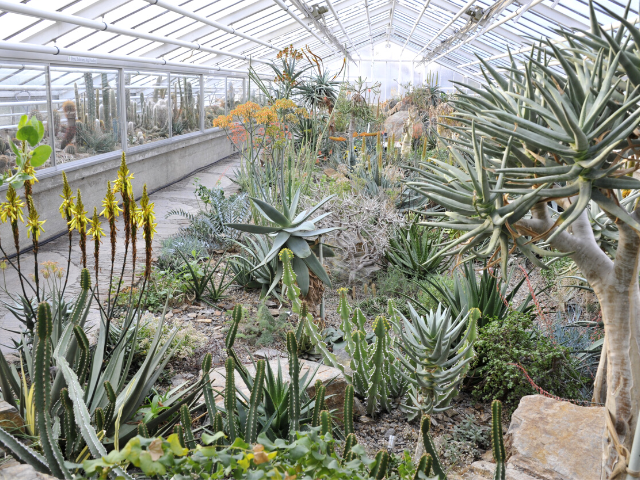Africa and Madagascar House
Entering the last of the three large halls (Hall C), one is reminded at first sight of the plants in the entrance hall. As far as shape and habitat requirements are concerned, there are indeed similarities: stem and leaf succulents adapted to dry climates grow here as well, but they belong to completely different families than the New World xerophytes in Hall A. They are mainly spurges, i.e. Euphorbias, with cactus-like shapes and aloes with fleshy leaves, which are at home in Africa and Madagascar.
House 5 (Small Succulent House) has succulent spurges (Euphorbiaceae) that store water in their stems. Aloes can also be seen here in great variety. Some tower up like trees, others remain stemless and form basal rosettes. On the west side, botanical treasures are displayed behind glass, such as the primitive Welwitschia mirabilis, the “Living Stones” (Lithops and other genera) and rare Aloe species.
Entering the last side house on the south side, one changes continents: In the Mexico House (House 6) with its impressive canyon-like landscape, visitors will find columnar and ball cacti inside as well as many agaves. The house did not exist when the garden was founded and was donated in 1958 by the Society of Friends of the Botanical Garden e.V. for the succulent plants.




